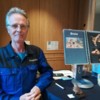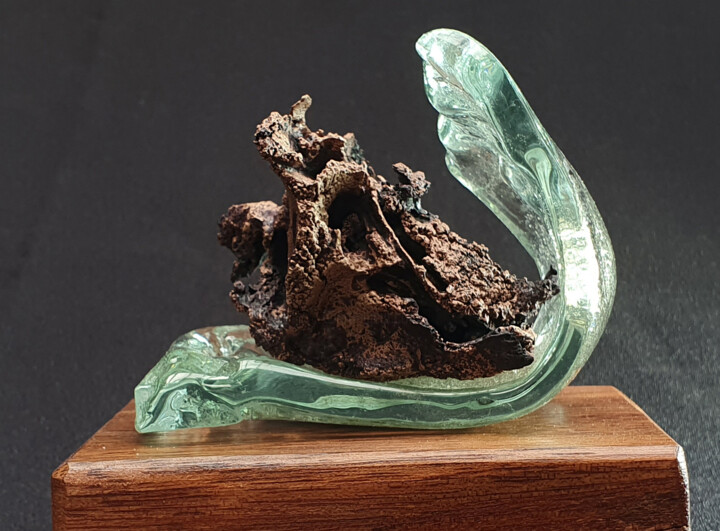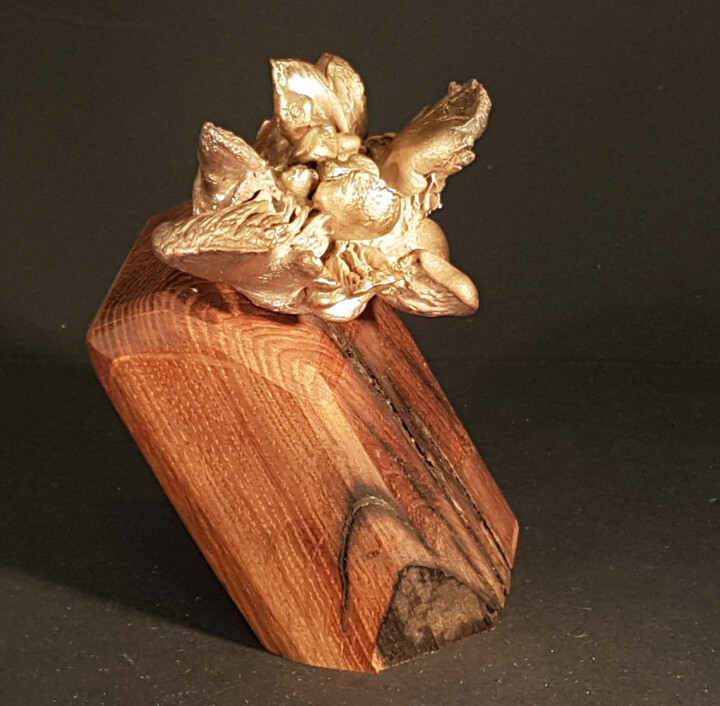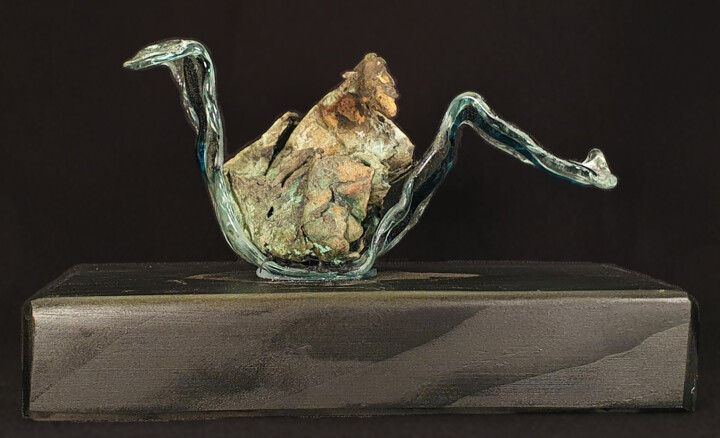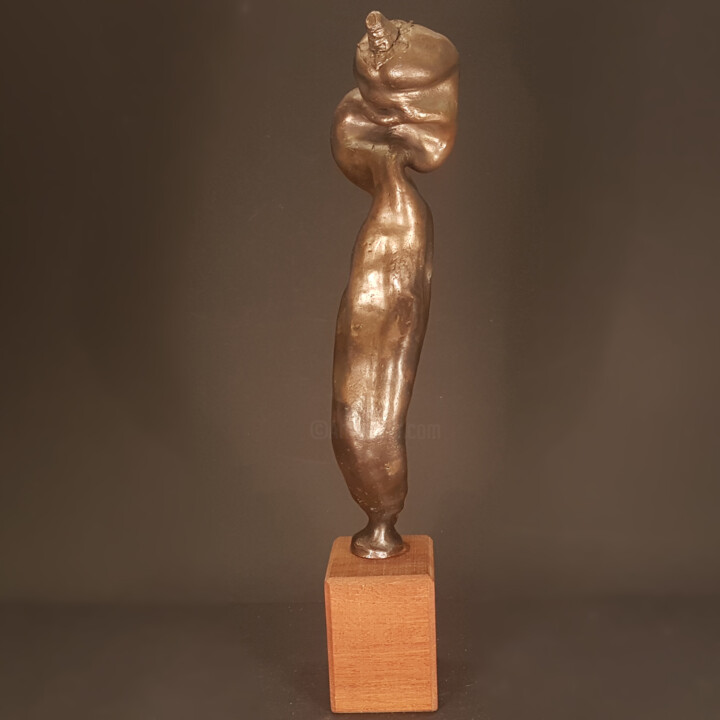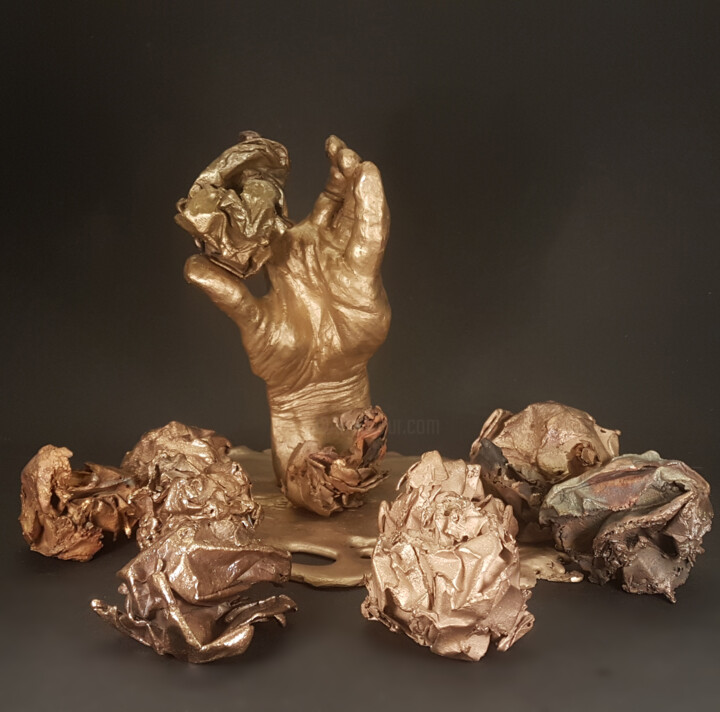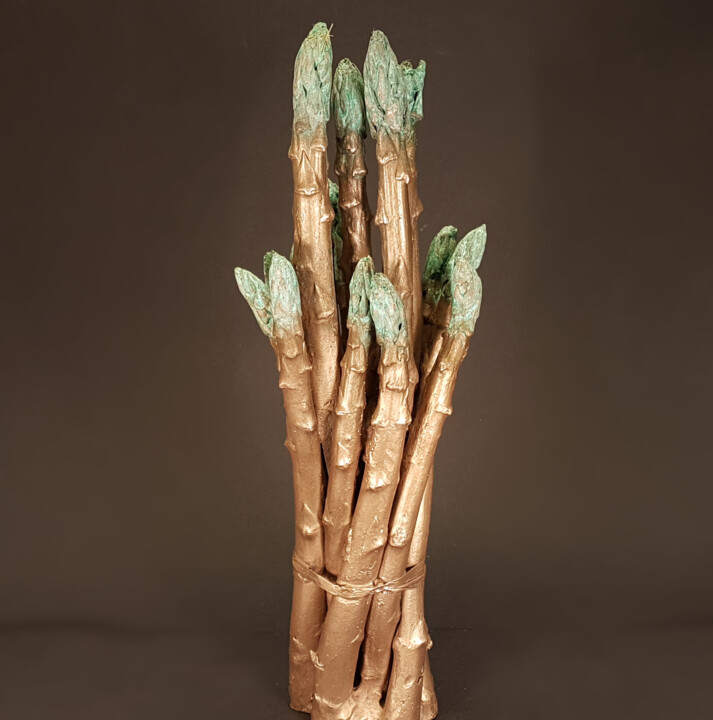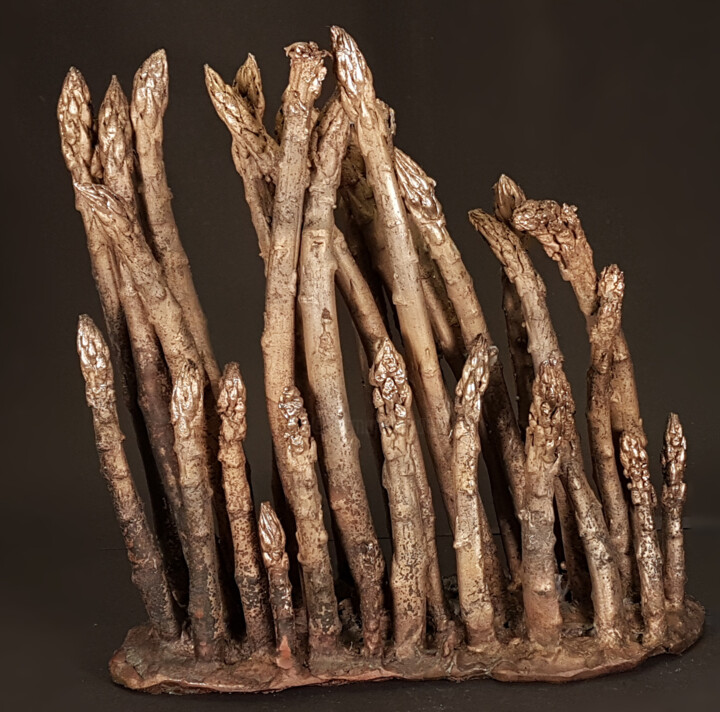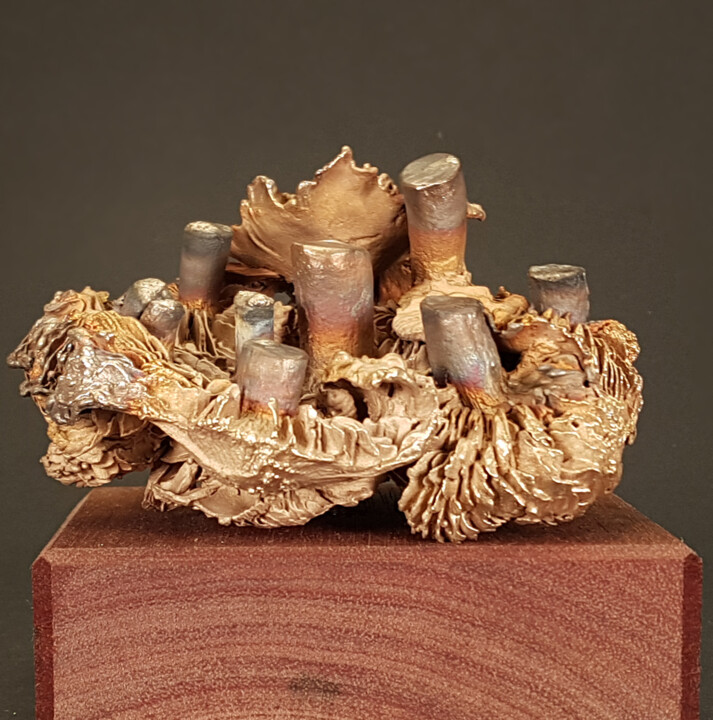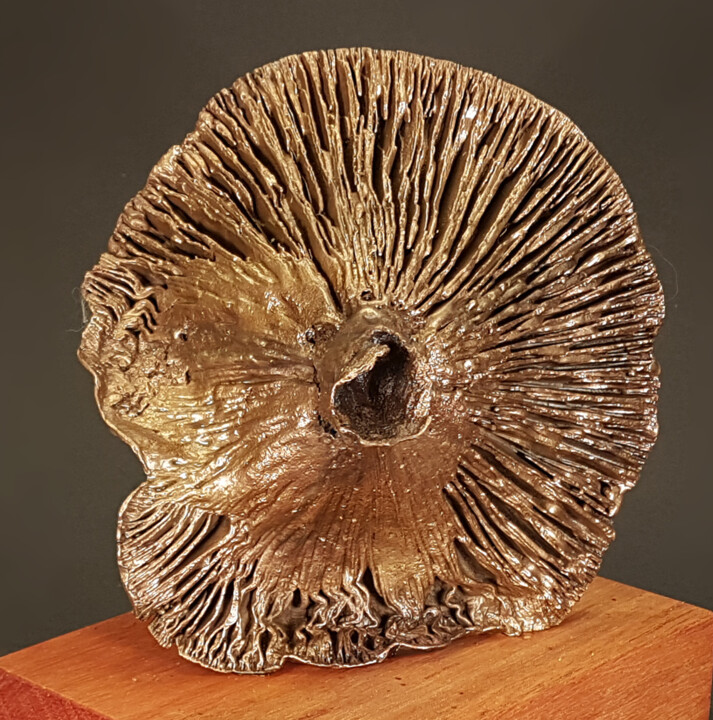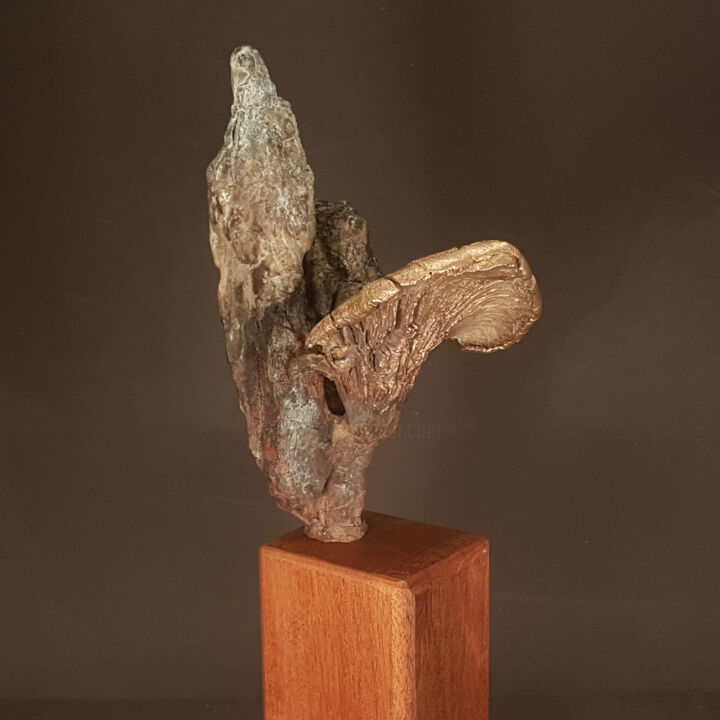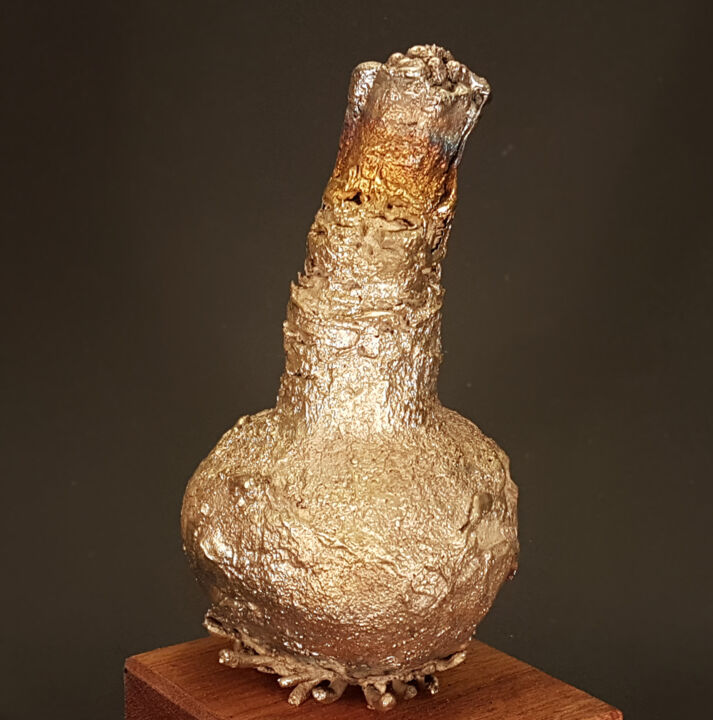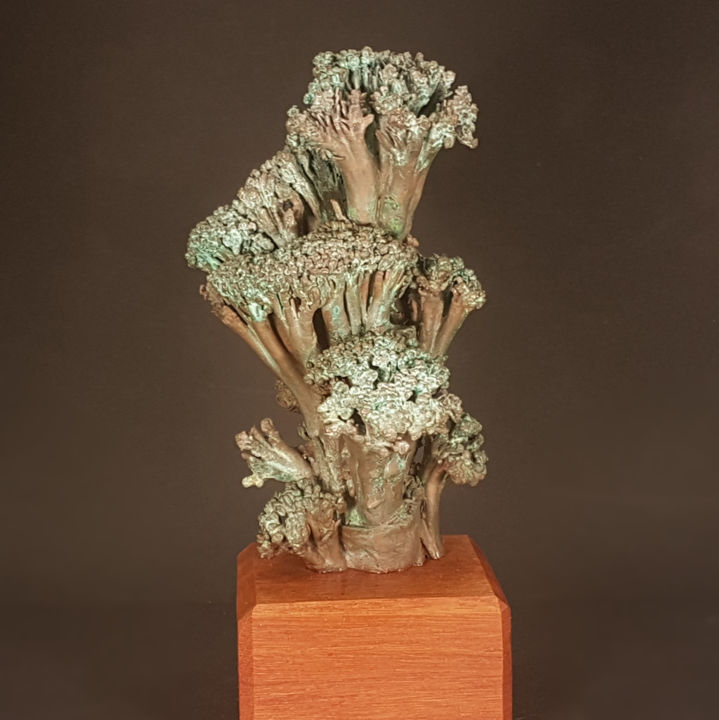What inspired you to make art and become an artist? (Events, feelings, experiences...)
I am a craft artist. I am fascinated by the possibilities of expressing and realizing visualizations, thoughts, in concrete materials such as steel and bronze.
Mjn first impetus to make art was during my training as a welder. When leaving the building, I passed the container with waste iron. At a glance at this motley collection of scraps of steel, I thought, "I could weld a skater out of that."
What is your artistic background, the techniques and subjects you have experimented with so far?
In addition to various craft courses, I am an auto-didactic side-timer. Only later in life did I turn my creativity and visual ability, into my profession.
Over the years I have experimented with many techniques: sawing, grinding and welding rigid pieces of steel into organic forms; combining waste pieces of wood from various types of trees into designer furniture; casting bronze and using it to render unmatched details.
Currently I am experimenting a lot with combining glass and bronze. Technically a challenging experiment (due to the large differences in the properties of both materials).
What are the 3 aspects that set you apart from other artists, making your work unique?
The detailed stillness of natural beauty. "The Splendor of Nature in the Power of Bronze".
The artisanal making process: I manufacture my sculptures all by myself: from initial idea, design, elaboration, shaping to making molds, casting bronze and finishing the sculpture. My detailing and fresh green patina are technically distinctive.
I don't always take "art" seriously. Regularly I make a more comical excursion: art with a wink. A sitting banana peel, a Lego puppet cleaning up the forest or "Now it's ART," a nod to Cattelan's over-hyped work.
Where does your inspiration come from?
Nature. Everything I see on my daily bike ride through the city.
What is your artistic approach? What visions, sensations or feelings do you want to evoke in the viewer?
In the viewer I want to evoke, wonder, joy, pleasure, a good feeling about all the beauty that surrounds us in everyday life. Through my detailed images I emphasize beauty of everyday objects. Not so much by changing the dimensions or 'blowing up' objects, but by distinguishing objects, setting them apart and literally immortalizing them in bronze.
What is the process of creating your works? Spontaneous or with a long preparation process (technical, inspiration from art classics or otherwise)?
Bronze casting in particular is a process with many steps. The "lost-wax" method I use allows for the detailing I desire, but has the disadvantage that each step in the process is one-time. If I make a mistake in one of the process steps, I cannot go back one stage in the process. I must then start over at step 1.
The steps: idea; design (on paper or in my head); shaping (paper, cardboard, beeswax, casting wax, wood, foam, rope, etcetera); casting preparation (applying casting channels, air channels, casting funnel, reinforcements); making plaster mold or ceramic mold; fire out mold (approx. 800 degrees for 4 to 8 hours); clean mold; heat bronze (approx. 1200 degrees); pour in bronze; after cooling, break mold; remove plaster residue; finish sculpture (remove casting and air ducts; grind); patina (partially); place sculpture on pedestal.
Do you use a particular working technique? if so, can you explain?
Yes, the "lost wax" method. This allows for fine detailing, but leads to one-time molds (of plaster or ceramic). Each sculpture is therefore unique.
Are there any innovative aspects to your work? Can you tell us which ones?
As a craft artist, I am constantly renewing my work. I try new techniques with each sculpture. Currently, this manifests itself in increasingly larger sculptures (as I make sculptures from parts and separate them for the total sculpture) and in combining glass and bronze.
Where do you produce your works? At home, in a shared workshop or in your own workshop? And in this space, how do you organize your creative work?
I produce my work in a shared workshop in Amsterdam (Openbare Werkplaats Amsterdam). An inspiring environment with many craftsmen and artists in different fields and with different techniques. I rent a workspace there one or more days every week. Each workplace is equipped with all the tools and equipment I need. The kilns I use I built myself and are now in the workshop for general use.
Does your work lead you to travel to meet new collectors, for fairs or exhibitions? If so, what does it get you?
I don't create my art for storage in the basement. Each exhibition gives me more insight into what art lovers may or may not appreciate in my work. Exhibitions provide good input for me, in addition to, of course, sales and regular commissions.
How do you envision the evolution of your work and your career as an artist in the future?
I have way more ideas and visualizations in my head than time! This year will be all about large objects (up to about 2 meters high) and deepening and expanding the glass-bronze combinations.
What is the theme, style or technique of your latest artistic production?
Theme: wonder and contrast
Style: impressionistic?
Technique: bronze with glass
Can you tell something about your most important exhibition experience?
The art lover who said to me, "Sir, you don't make sculptures. You make sculptures. Although they are small in size, a diminutive word does them disservice".
If you could have created a famous work of art history, which one would you choose? And why?
There are many images that I would have loved to create. All are images that make the viewer happy, cheerful, give a pleasant feeling. Perhaps the most important work for me: the little man sawing off a branch in the big tree on Leidseplein in Amsterdam - No title / maker unknown. The work is small, hardly noticeable, but is one of the most appreciated works of art in Amsterdam.
If you could invite a famous artist (dead or alive) to dinner, who would it be? How would you recommend he spend the evening?
I am not a strong networker. Having dinner with a famous artist quickly feels awkward. But walking around a random artist's studio in bronze for a while and endlessly trees about techniques used sounds appealing.

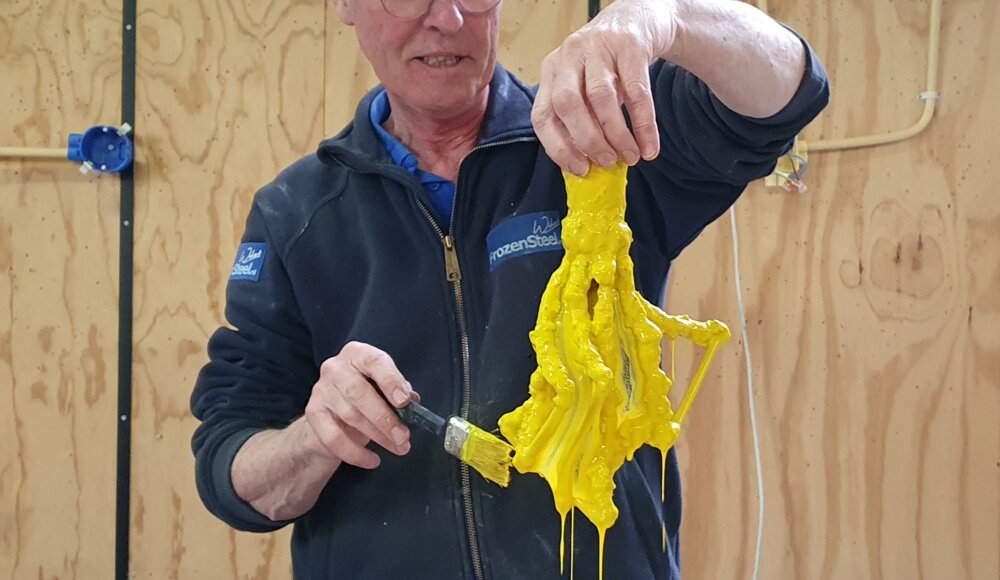


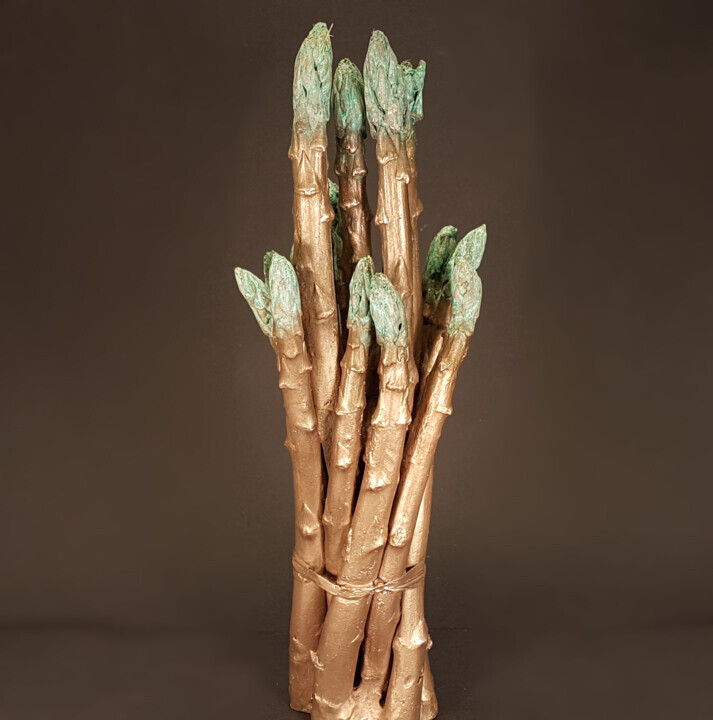
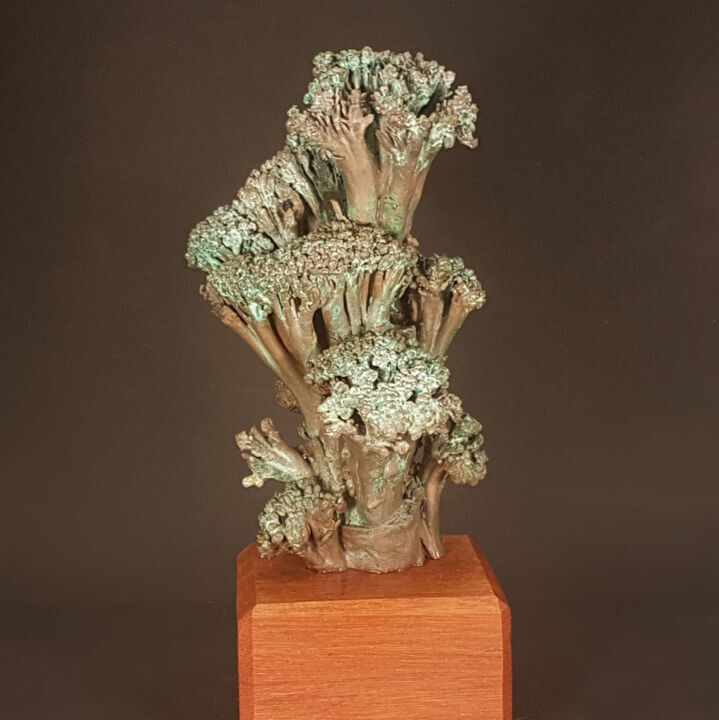
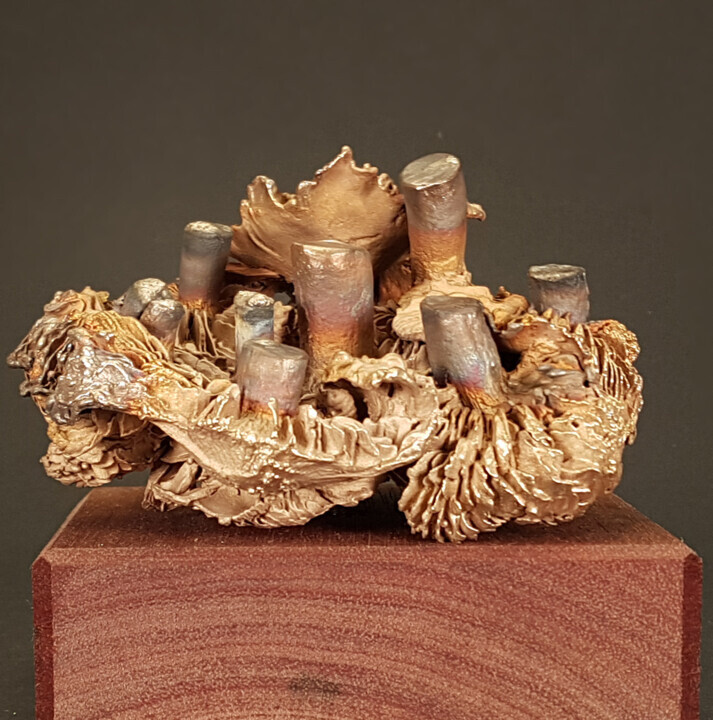
 Olimpia Gaia Martinelli
Olimpia Gaia Martinelli
